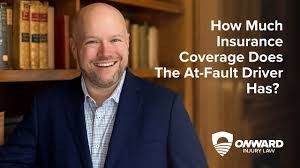
Not knowing your policy limits can quietly undermine the very protection you thought you had in place. Insurance is designed to provide financial support when life takes an unexpected turn, but that support is not unlimited. Every policy comes with defined boundaries—maximum amounts the insurer will pay under specific circumstances. When those limits are unclear or misunderstood, the consequences can be both surprising and costly. The moment you need your coverage most is not the time to discover that it falls short.
Policy limits are not just numbers buried in fine print; they are the framework that determines how much financial relief you can expect in a crisis. Whether it’s auto, health, home, or liability insurance, these limits define the ceiling of your protection. If you’re unaware of them, you may assume you’re covered for more than you actually are. That assumption can lead to decisions that expose you to unnecessary risk. For instance, someone who believes their auto insurance covers all damages in a major accident might be shocked to learn that their liability limit caps out at a fraction of the total costs. The remaining balance becomes their responsibility, often leading to financial strain or legal complications.
This disconnect between expectation and reality is more common than many realize. Insurance policies are often purchased during busy or stressful times, and once the paperwork is signed, it’s easy to file it away and forget the details. But life changes—assets grow, responsibilities shift, and risks evolve. If your policy limits don’t keep pace with those changes, you may find yourself underinsured. A homeowner who renovates their property or acquires valuable belongings might still be operating under coverage limits set years ago. If a fire or theft occurs, the reimbursement may fall far short of the actual loss.
Businesses face even greater stakes when policy limits are unclear. Commercial insurance is complex, covering everything from property damage and liability to cyber threats and employee health. A company that doesn’t fully understand its limits may assume it’s protected against certain risks, only to discover exclusions or caps that leave it exposed. For example, a business hit by a data breach might expect full coverage for recovery costs, legal fees, and customer notifications, only to find that their cyber liability policy has a sublimit that barely scratches the surface. The fallout can be severe—financial losses, reputational damage, and operational disruption.
The emotional impact of not knowing your policy limits is also significant. Insurance is meant to provide peace of mind, a sense of security in uncertain times. But that peace is fragile when built on assumptions. Discovering a coverage gap during a crisis adds stress to an already difficult situation. It can lead to feelings of betrayal, confusion, and helplessness. On the other hand, understanding your limits fosters confidence. It allows you to plan realistically, make informed decisions, and respond to challenges with clarity.
Technology has made it easier to access policy information, but it hasn’t eliminated the need for engagement. Digital platforms can display coverage summaries and send alerts, but they still rely on users to take initiative. Reviewing your limits regularly, especially during life transitions, is essential. It’s not about memorizing every clause—it’s about knowing enough to make smart choices. A quick check-in with your insurer, a conversation with a trusted advisor, or a review of your documents can reveal whether your coverage still fits your needs.
Education plays a vital role in bridging the gap. Many people feel intimidated by insurance simply because they’ve never been taught how to interpret it. They don’t know what policy limits mean, how they’re structured, or how they apply in real-world scenarios. When insurers invest in education—through clear communication, accessible resources, and personalized guidance—they empower customers to take control. This empowerment transforms insurance from a confusing obligation into a strategic tool. It helps people see coverage not just as protection, but as a reflection of their financial awareness and preparedness.
Ultimately, not knowing your policy limits is a silent risk. It doesn’t announce itself until the moment you need support, and by then, the consequences can be steep. Insurance is a powerful ally, but only when it’s understood and actively managed. By taking the time to clarify your limits, ask questions, and stay engaged, you ensure that your coverage is not just present—but prepared. You turn insurance from a passive product into an active part of your financial strategy. And in a world full of uncertainty, that kind of clarity is not just helpful—it’s essential.